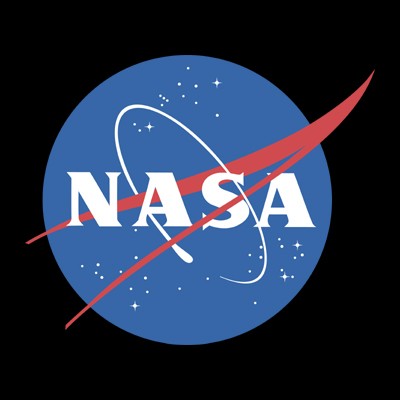- 6,489
- 1,704
So according to some websites astronomers have a thing called "Future visibility limit" which predicts that we will see another 33% of the observable universe. Currently the observable universe is at a radius of 46.5 billion light-years. The "future visibility limit" predicts that we'll eventually get to a radius of 61 billion light-years.
Apparently this prediction is very well accepted in the scientific community.
How much more information, or acceptance, would be needed to use it to revise baseline 3-A?
Link to source here https://ui.adsabs.harvard.edu/abs/2005ApJ...624..463G/abstract
Here is some underlying information behind this thingy'ma'bob
This reply is about the credibility of the AAS
This is what "Future Visibility Limit" means.
The article that got the 61 billion light years as the future visibility limit was published in an article owned by AAS (The American Astronmers association)
This entire article in the link below is about their peer review process
Their Director of Public Policy & Deputy Executive Officer Joel Parriott is currently on assingment to the white house with OSTP stuff
AAS journal received it on 2003 of November 18; but accepted it in 2005 on January 3 then later published in May of 2005. So it had almost 2 years of being reviewed.
The AAS has decades of experience with the White House
 www.event.iastate.edu
www.event.iastate.edu
and this is the reason why they take an active role in politics
The AAS has many members from Nasa. Here is one example out of... many actually..
Apparently this prediction is very well accepted in the scientific community.
How much more information, or acceptance, would be needed to use it to revise baseline 3-A?
Link to source here https://ui.adsabs.harvard.edu/abs/2005ApJ...624..463G/abstract
Here is some underlying information behind this thingy'ma'bob
This reply is about the credibility of the AAS
The current 3-A baseline uses a radius range of 4.4087x10^26 meters (46.508 billion light years)
The study i dropped bumps that up to 5.86281467386e+26 meters (~61.97 billion light years)
that is about ~33.2459% increase in the radius/range
This is what "Future Visibility Limit" means.
Assuming dark energy remains constant (an unchanging cosmological constant), so that the expansion rate of the universe continues to accelerate, there is a "future visibility limit" beyond which objects will never enter the observable universe at any time in the infinite future, because light emitted by objects outside that limit could never reach the Earth. (A subtlety is that, because the Hubble parameter is decreasing with time, there can be cases where a galaxy that is receding from the Earth just a bit faster than light does emit a signal that reaches the Earth eventually.[14][21]) This future visibility limit is calculated at a comoving distance of 19 billion parsecs (62 billion light-years), assuming the universe will keep expanding forever, which implies the number of galaxies that we can ever theoretically observe in the infinite future (leaving aside the issue that some may be impossible to observe in practice due to redshift, as discussed in the following paragraph) is only larger than the number currently observable by a factor of 2.36.[note 3]
Though, in principle, more galaxies will become observable in the future, in practice, an increasing number of galaxies will become extremely redshifted due to ongoing expansion; so much so that they will seem to disappear from view and become invisible.[22][23][24] An additional subtlety is that a galaxy at a given comoving distance is defined to lie within the "observable universe" if we can receive signals emitted by the galaxy at any age in its past history (say, a signal sent from the galaxy only 500 million years after the Big Bang), but because of the universe's expansion, there may be some later age at which a signal sent from the same galaxy can never reach the Earth at any point in the infinite future (so, for example, we might never see what the galaxy looked like 10 billion years after the Big Bang),[25] even though it remains at the same comoving distance (comoving distance is defined to be constant with time—unlike proper distance, which is used to define recession velocity due to the expansion of space), which is less than the comoving radius of the observable universe.[clarification needed] This fact can be used to define a type of cosmic event horizon whose distance from the Earth changes over time. For example, the current distance to this horizon is about 16 billion light-years, meaning that a signal from an event happening at present can eventually reach the Earth in the future if the event is less than 16 billion light-years away, but the signal will never reach the Earth if the event is more than 16 billion light-years away.[14]
The article that got the 61 billion light years as the future visibility limit was published in an article owned by AAS (The American Astronmers association)
The AAS maintains an active program in public policy to influence policy decisions that impact our science, while actively engaging and informing our community about what is going on and how they can take positive steps to participate in the policy process.
Impact | American Astronomical Society
The mission of the AAS is to enhance and share humanity's scientific understanding of the universe, which it achieves through publishing, meeting organization, education and outreach, and training and professional development.aas.org
This entire article in the link below is about their peer review process
Their Director of Public Policy & Deputy Executive Officer Joel Parriott is currently on assingment to the white house with OSTP stuff
AAS journal received it on 2003 of November 18; but accepted it in 2005 on January 3 then later published in May of 2005. So it had almost 2 years of being reviewed.
The AAS has decades of experience with the White House
What's Happening Inside the Beltway and Why You Should Care • Events Calendar • Iowa State University
[b]Joel Parriott[/b] American Astronomical Society
and this is the reason why they take an active role in politics
Public policy forms the foundation upon which we practice our science. Through policy, we answer questions about the importance of science among other national concerns, what science should be funded and at what level, and how government-supported science should be carried out.
For astronomy, public policy determines:
- Budgets and funding for building telescopes and supporting researchers through grants
- The structure and authorities of NASA, NSF, and other science agencies
- How universities can support and educate students in STEM
- How we collaborate internationally through immigration and research security laws
- Regulatory measures that impact use of the radio spectrum or protect from light pollution
- Open data access, support for diversity in STEM, prevention of harassment, and much more
Advocacy | American Astronomical Society
Public policy is a catchall phrase that includes actions of and interactions with both Congress and the Executive branch. The government has other impacts on astronomy beyond providing funds for research and research facilities. Policies on education, such as stipend levels allowed under...aas.org
The AAS has many members from Nasa. Here is one example out of... many actually..
AAS Fellows Program | American Astronomical Society
The AAS Fellows program was established in 2019 (read our press release) to recognize AAS members for their contributions toward the Society's mission of enhancing and sharing humanity's scientific understanding of the universe.aas.org
Alan Boss (Earth and Planets Laboratory, Carnegie Institution for Science) For innovative theoretical investigations of the formation of stars and exoplanets, particularly for advancing the theory of gravitational instability in the rapid formation of gas giants planets. For great commitment to confronting exoplanet formation theory with observations, including his work on the Kepler Mission Science Team, and for his tireless leadership within the exoplanet exploration community in ensuring that NASA executes a credible and successful exoplanet program.
Last edited:











